video/film
Archived Posts from this Category
Archived Posts from this Category
Posted by ben on 14 Jun 2007 | Tagged as: responses/reviews, tv, video/film
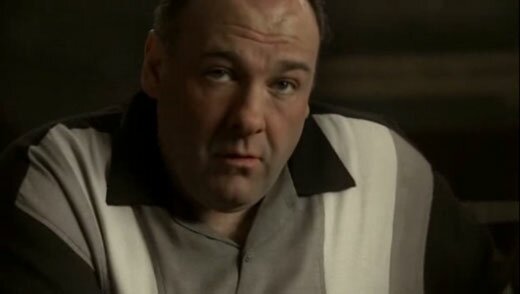
[Note: Yes, there are spoilers below.]
I wish I had something incredibly insightful to say about the conclusion of The Sopranos, but so much critical commentary is swirling around that it’s hard to feel like I can catch up with it all, much less make a contribution to the conversation.
Timothy Noah has a pretty good round-up of the current critical state of play over at Slate. I agree that the ending was nothing like City Lights (or The Graduate, for that matter); there was no epiphany, no resolution, not even an implied one. In some ways it revisited the endings of earlier seasons, with the intimate family dinner. In fact, A.J. makes a direct reference to the final lines of Season 1, while the family dined in Vesuvio’s during a rain storm (Tony: “I’d like to propose a toast, to my family. Someday soon, you’re gonna have families of your own, and if you’re lucky, you’ll remember the little moments, like this… that were good.”). In the final lines of Season 6, we are taken back to this moment:
Tony: It’s an entry level job. Buck up.
A.J.: Right, focus on the good times…
Tony: Don’t be sarcastic.
A.J.: Isn’t that what you said one time? Try and remember the times that were good?
Tony: I did?
A.J.: Yeah.
Tony: Well it’s true, I guess.
I think this reference is much more telling and meaningful than the “blackout” theory floating around. A lot of people wanted a resolution, and the ultimate resolution would be the death of Tony Soprano. But the show has never really been about that kind of resolution. It’s always been the resolution of finishing a day at work and having a few hours with your family before the next day begins.
So why the tense build-up and awkward drop-off of the final scene? Perhaps it’s a refusal to give us the comfort of an even remotely tidy ending. The show stopped not because the story was over, but because we can’t go on watching it forever (the last words we hear come from the Journey song playing on the jukebox: “Don’t stop…”). In this way, David Chase was able to succeed in conclusively not ending The Sopranos.
And he gave us all something to talk about.
Posted by ben on 06 Jun 2007 | Tagged as: performance art, silliness, video/film
A subtle and layered performance by one of America’s great performance artists (this is on the early ’80s sketch comedy show, Fridays):
Posted by ben on 25 May 2007 | Tagged as: music, rock!, video/film
Magma is a French prog-rock outfit that formed in 1969. Although they are known for epic orchestral arrangements inspired by Carl Orff, I love this stripped-down vocal, piano and bass version of Otis from 1981. Founding drummer / singer Christian Vander sings about the destruction of the earth in a language he constructed called Kobaïan. Buying can get pricey, but I just noticed their albums are dirt-cheap on iTunes.
Posted by ben on 14 May 2007 | Tagged as: music, sound art, video/film
This film was produced for the Phillips Pavilion at the 1958 World’s Fair in Brussels by Le Corbusier, Edgar Varèse, and Iannis Xenakis. It was shown in an exhibition space (described more fully below) which included 425 speakers, so that the sounds could follow complex routes through the space. Watching it on YouTube is a far cry from the intended experience, but is rewarding nonetheless. For a more complete examination of this ground-breaking project, check out Marc Treib’s “.”
“Poème électronique” is the first electronic-spatial environment to combine architecture, film, light and music to a total experience made to function in time and space. Under the direction of Le Corbusier, Iannis Xenakis’ concept and geometry designed the World’s Fair exhibition space adhering to mathematical functions. Edgar Varèse composed the both concrete and vocal music which enhanced dynamic, light and image projections conceived by Le Corbusier. Varèse’s work had always sought the abstract and, in part, visually inspired concepts of form and spatial movements. Among other elements for “Poème électronique” he used machine noises, transported piano chords, filtered choir and solo voices, and synthetic tone colorings. With the help of the advanced technical means made available through the Phillips Pavilion, the sounds of this composition for tape recorder could wander throughout the space on highly complex routes.
“The Philips Pavilion presented a collage liturgy for twentieth-century humankind, dependent on electricity instead of daylight and on virtual perspectives in place of terrestrial views.” — Marc Treib,
Posted by ben on 08 May 2007 | Tagged as: essays, video/film
Via Andrew Sullivan, I ran across this interesting post at 3quarksdaily defending the films of Sophia Coppola and Wes Anderson as “New Mannerism“:
Coppola and Anderson make films that feel nothing like the great works of, say, Antonioni or even the New Wave directors or, for that matter, the films of Francis Ford Coppola. The New Mannerists are conveying a different kind of experience. They are interested in getting a certain feel or a mood right and they value achieving that sense of mood far above accomplishments in narrative or character development.
Posted by ben on 03 May 2007 | Tagged as: video/film
The video compression artifacts just add another layer of “electronic” to Nam June Paik & Jud Yalkut’s “Electronic Moon #2″ (from 1969):
Posted by ben on 30 Apr 2007 | Tagged as: music, performance art, video/film
Around the same time that Destroy All Monsters started playing around with strange music and film footage, The Residents embarked on their underground film project, Vileness Fats. Although the film was never completed, some of the footage was used for music videos in the coming years. From the official Residents web site:
The world of Vileness Fats, consisting of a village, a cave, a desert and a nightclub, is tiny, claustrophobic and primarily populated by one armed midgets…. Two versions of the incomplete feature have been released: the 32 min long “Whatever Happened to Vileness Fats?” (1984) and the tighter 17 1/2 min “Vileness Fats (Concentrate)” (2001), and both come across as artifacts from some hellish but mildly amusing nightmare — the claustrophobic product of a model railroad builder’s beyond bad acid trip.
Here is some of the footage, with part of the classic “Third Reich ‘n Roll” (a commentary on the fascism of the music industry) as the soundtrack:
Also check out the Buñuelesque .
Posted by ben on 23 Apr 2007 | Tagged as: music, performance art, video/film
Destroy All Monsters, whose founding members include Mike Kelley and Jim Shaw, was a legendary Detroit anti-rock band with almost no recorded output other than a DVD called , and a now out-of-print 3-CD set released on Ecstatic Peace (a few other live recordings have trickled out and are available here). The group’s shows were an abrasive blend of noise, performance art, and visual chaos. Grow Live Monsters includes no-budget Destroy All Monsters film footage from 1971 to 1976. Around 1976 Kelley and Shaw left the group to pursue their visual art careers, and were replaced by Ron Asheton from the Stooges and MC5 bassist Michael Davis. Here’s a clip from the DVD:
Posted by ben on 20 Apr 2007 | Tagged as: responses/reviews, video/film
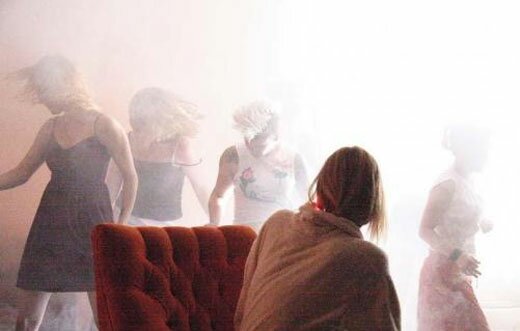
“Inland Empire” last night, not sure a traditional review is the most appropriate response (although that one will give you a good idea of what you’re in for).
But some thoughts. The red velvet curtains, the flickering lights that have haunted Lynch’s work since “Twin Peaks” (or earlier?) return. I think they still work — I think, in fact, they have developed since the Block Lodge. I wonder what this would look like to someone who hadn’t followed Lynch’s work. Are these images strengthened or dulled by a familiarity with Lynch’s vernacular?
To me, it’s not quite as crisp as “Mulholland Drive.” The contrast between acting and living isn’t as striking. There we see a reversal: the superficiality of life contrasted with the reality of acting. Here it all seems to blend and shift, there is rarely a moment in which you can say “ah, she’s acting” or “yes, this is real.” So “Mulholland Drive” remains for me the high point of Lynch’s ability to draw you in emotionally. There are more genuinely funny, scary, passionate moments there than in any of his other work (that I’ve seen).
For some reason, I kept thinking about Buñuel’s “That Obscure Object of Desire,” and how Buñuel used two actresses to play the same character in order to represent the shifts in identity. Lynch, instead, leaves the actress the same, and changes everything around her. Although he did use the Buñuel technique in “Mullholland Drive,” and I think (perhaps) at the very end of “Inland Empire.” If I’m reading this correctly, the shift in roles at the end of “Inland Empire” is a moment of freedom, whereas in “That Obscure Object of Desire” it seems to be a prison.
When the identities of the characters shift, relationships remain intact. I think this is an exploration of the tension between layers of identity. We may reconstruct our identities, but still relive the same relationships, until we transform ourselves on a deeper level. This is the “happy ending,” I think: she fundamentally changes her role in life, somehow.
Ultimately, though, this is a work of texture: visual, auditory, poetic textures contrasting and playing off of each other. Everything from the framing of the shots to the set design, lighting, soundtrack, dialogue and sometimes very subtle shifts in camera focus, give the sense of a development that is simply not narrative. There’s the suggestion of a narrative, of a developing plot, but in many ways it remains a very formal work. It is about the creation of mood, the development of character, the movement of story, but the moods are ambiguous, the characters are unstable, and the plot is pretty much non-existent. As Jason says, this does feel like the culmination of Lynch’s art, and I’ll add, probably about as good a definition of “post-modern” are you are likely to find anywhere.
PS. After the movie, we managed to get to Rock Bottom before Adult. took the stage. Their set, though short, was pretty heavy. They ditched their guitar player, so the synths moved to the forefront, which as Jeff DeCuir predicted at their last show in San Antonio, was a very good thing. I’m not sure if I just didn’t notice before, but their synth work is really interesting, coming from dance / industrial, but moving into abstraction. They can definitely be compared to Throbbing Gristle at times, but with those punkish vocals, the effect is pretty unique.
Posted by ben on 17 Apr 2007 | Tagged as: upcoming events, video/film
David Lynch’s new movie, Inland Empire, is playing at the Bijou through Thursday night. If you haven’t seen it yet, catch it while you can!
Posted by ben on 16 Apr 2007 | Tagged as: music, sound art, video/film
I just discovered Piotr Kamler while searching YouTube for work by Bernard Parmegiani (Parmegiani scored some of Kamler’s films). Kamler’s films are a kind of lyrical, abstract take on science fiction, with stunning animation sequences executed in a wide variety of media.
Here’s Une Mission Ephemere (1993; scored by Parmegiani):
Also check out (scored by Francois Bayle). Here’s a good discussion of the work of Kamler and his contemporaries. And if you like the soundtrack: two Parmegiani albums are available for download on Mutant Sounds right now.
Posted by justin on 02 Apr 2007 | Tagged as: adventure day, art + bikes, art paparazzi, party photos, performance art, renegade performances, silliness, video/film
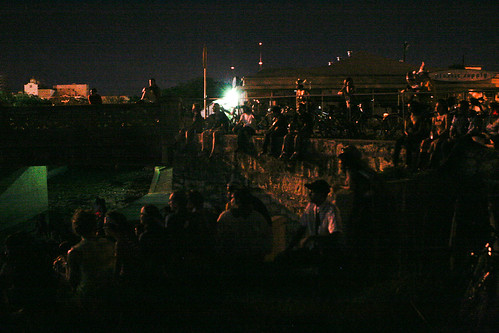
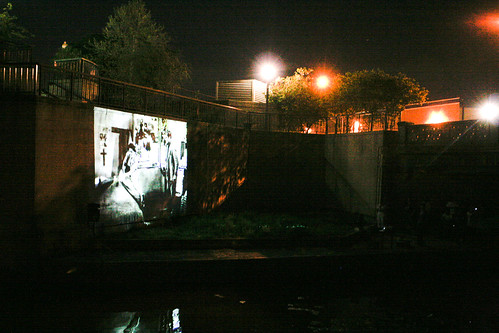

A group of satisfied Bike Gangers looks on at the renegade video projection stumbled on in “Tacoland Park,” this last Saturday Night. The Bike gang stopped by the SWC Club, Tacoland Park, The Cherry street Bridge, Brackenridge Golf Course, Pine Street stretch, above Sunken Gardens, Ghost Train Field, and La Tuna to name a few. (some of these place names are local lore and quite unofficial) . A collection of photos outlining the entire evening in its entirety can be found here.

Shouting at an oncoming train on the Cherry Street Bridge
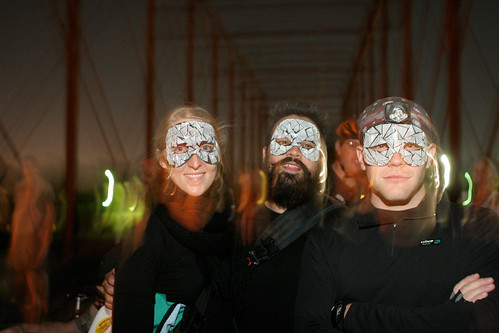
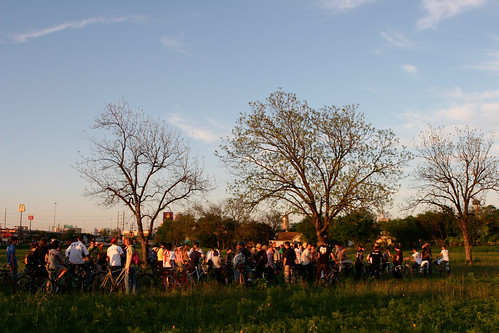
Legend has it that when the moon is jussssst right you can still see the trains turning on imaginary tracks out here, emptying herds to slaughter at the union stockyards.
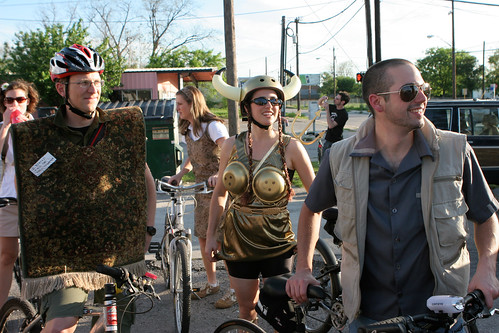
the Lebowski Rollers + many more can be seen here.
If you were one of the many who took part, Thank you!
Posted by ben on 01 Apr 2007 | Tagged as: art paparazzi, performance art, responses/reviews, sound art, video/film
Justin Parr took some cell phone video of Chris Kubick & Anne Walsh’s recent performance at UTSA, A Thousand Years of Sound Effects (below). It was a three-part performance, with each part focusing on a specific kind of sound effect. In all three parts, the performance was an interaction between the artists and a SuperCollider program designed to play sound effects in response to input parameters, with a certain amount of randomness thrown in. The first part, which was performed by Kubick alone, involved less physical performance than the others. This piece was a collection of bell sound effects, which were played as Kubick interacted with the program through the keyboard and other inputs. For the next piece, Kubick and Walsh both interacted with the computer by stepping on pressure sensitive inputs placed on the floor. The sounds used in this performance were of horses galloping or walking. The final piece used sound effects of people clapping, and the artists interacted with the computer by clapping into a microphone (you can watch a segment of this piece below).
The program also generated video to accompany the sounds. For most of the performance, the program displayed the name of the audio file(s) being played, giving a glimpse into the strange world of sound effect naming conventions. Many of the effects had titles such as “Fairy Belching” or “Claps of old powerful men, white.” Sometimes the titles referred to the location of the recording, other times to more abstract characteristics. The interaction between these sounds, which have no context and therefore a wide variety of potential meanings, and their titles, which at times provided absurdly specific cultural contexts, was of particular interest to the artists. During the horse performance, some images of horses were displayed rather than the titles of the sound effects. The images were fairly crude and had a sort of clip-arty feel.
The performance was rough, and the artists are clearly just beginning to explore the potential of this concept (in fact, this was the first time that the pieces have been performed in public). The work does, however, have a lot of potential, and it will be interesting to see how they develop these performances in the future.
Posted by ben on 23 Mar 2007 | Tagged as: essays, poetry, video/film
A few months ago I wondered whether we’d lost the art of writing a good manifesto. Recently a friend sent me Herzog’s “Minnesota Declaration,” which demonstrates that a good manifesto can still pop up now and again. It is interesting to think about in terms of Herzog’s own documentary work, which always seems to be an examination of the construction of reality, rather than an attempt to hold reality captive. Here is the text in full:
Minnesota declaration: truth and fact in documentary cinema
“LESSONS OF DARKNESS”1. By dint of declaration the so-called Cinema Verité is devoid of verité. It reaches a merely superficial truth, the truth of accountants.
2. One well-known representative of Cinema Verité declared publicly that truth can be easily found by taking a camera and trying to be honest. He resembles the night watchman at the Supreme Court who resents the amount of written law and legal procedures. “For me,” he says, “there should be only one single law: the bad guys should go to jail.”
Unfortunately, he is part right, for most of the many, much of the time.3. Cinema Verité confounds fact and truth, and thus plows only stones. And yet, facts sometimes have a strange and bizarre power that makes their inherent truth seem unbelievable.
4. Fact creates norms, and truth illumination.
5. There are deeper strata of truth in cinema, and there is such a thing as poetic, ecstatic truth. It is mysterious and elusive, and can be reached only through fabrication and imagination and stylization.
Posted by justin on 21 Mar 2007 | Tagged as: adventure day, announcements, in yo face, performance art, silliness, sneak peeks, sound art, upcoming events, video/film
Potter-Belmar labs, among others will be part of the March 31st bike gang summit starting at 1906 south flores. The ride will wind through downtown and other parts of the city with stops in all manner of strange locale. I have just gotten word that at some juncture we will be finding a giant renegade video projection..
Come up with a good gang name and theme and dress it up! this is going to be really really really fun. (really!)
The Beto Gonzales designed flyer.

Posted by michelle on 11 Mar 2007 | Tagged as: sound art, video/film
This illuminating bit of adroit video editing inhabited the SFMOMA a few years ago, thought it would be a delightful Sunday morning, musical message…Enjoy.
Posted by ben on 23 Feb 2007 | Tagged as: music, video/film
I’m honestly not sure if this Kraftwerk video presents a chilling vision of the future, or a glorious dream that one day all men will wear blinking ties. Maybe that’s what makes it so brilliant, a perfect Friday afternoon treat.
Posted by ben on 09 Feb 2007 | Tagged as: video/film
Now that Inland Empire is making its way into theaters, I thought it might be a good time post this David Lynch clip that appeared on YouTube last year. Apparently it is not a scene from Inland Empire, but these characters are in the movie. I think this clip works well on its own; Lynch’s sense of atmosphere and timing keeps getting stronger all the time. I’ve never been much of a fan of his work from the Blue Velvet period, but his new projects consistently impress me.
Posted by ben on 03 Feb 2007 | Tagged as: upcoming events, video/film
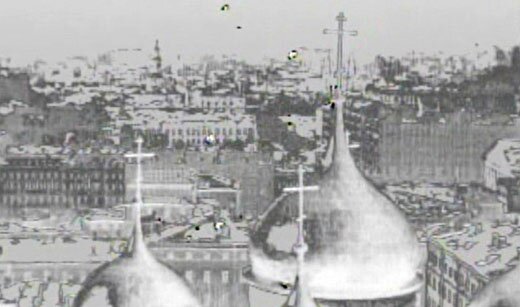
For those of you looking to have some fun without all the commercials and guacamole, the Emvergeoning-endorsed Superbowl alternative tomorrow night is Potter-Belmar Labs‘ video performance at . The performance is scheduled to run from 7-8 pm.